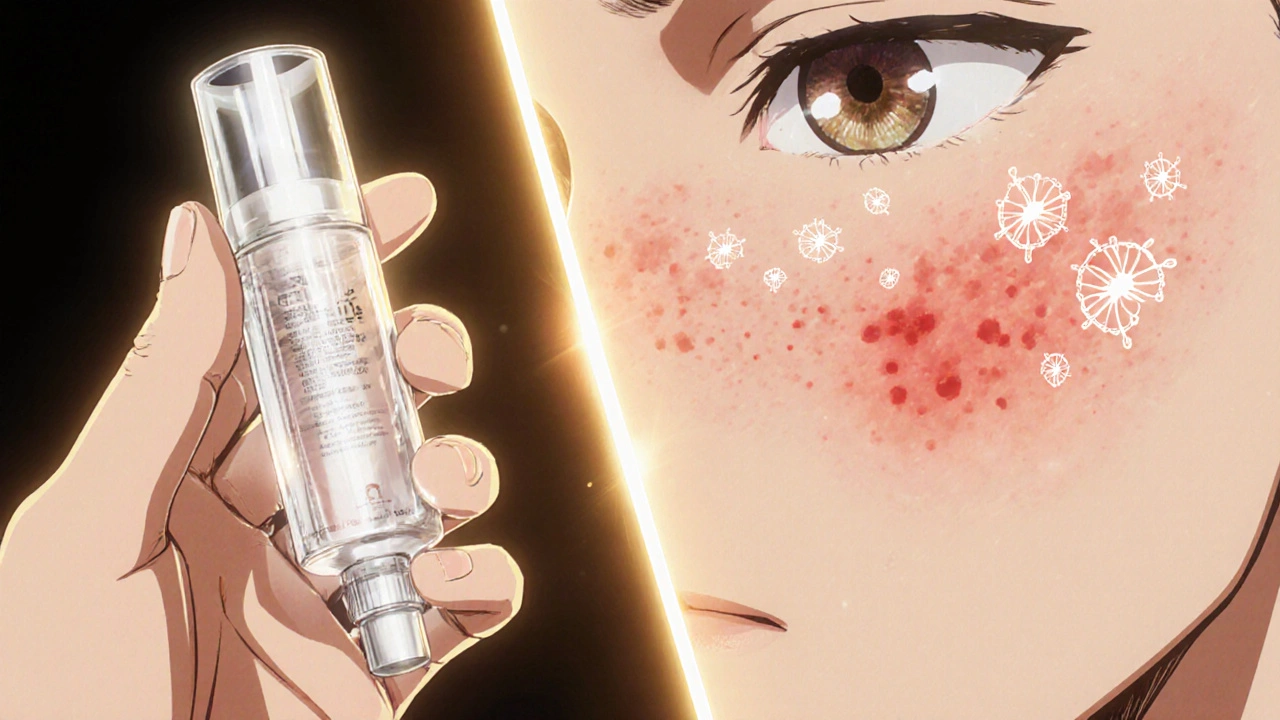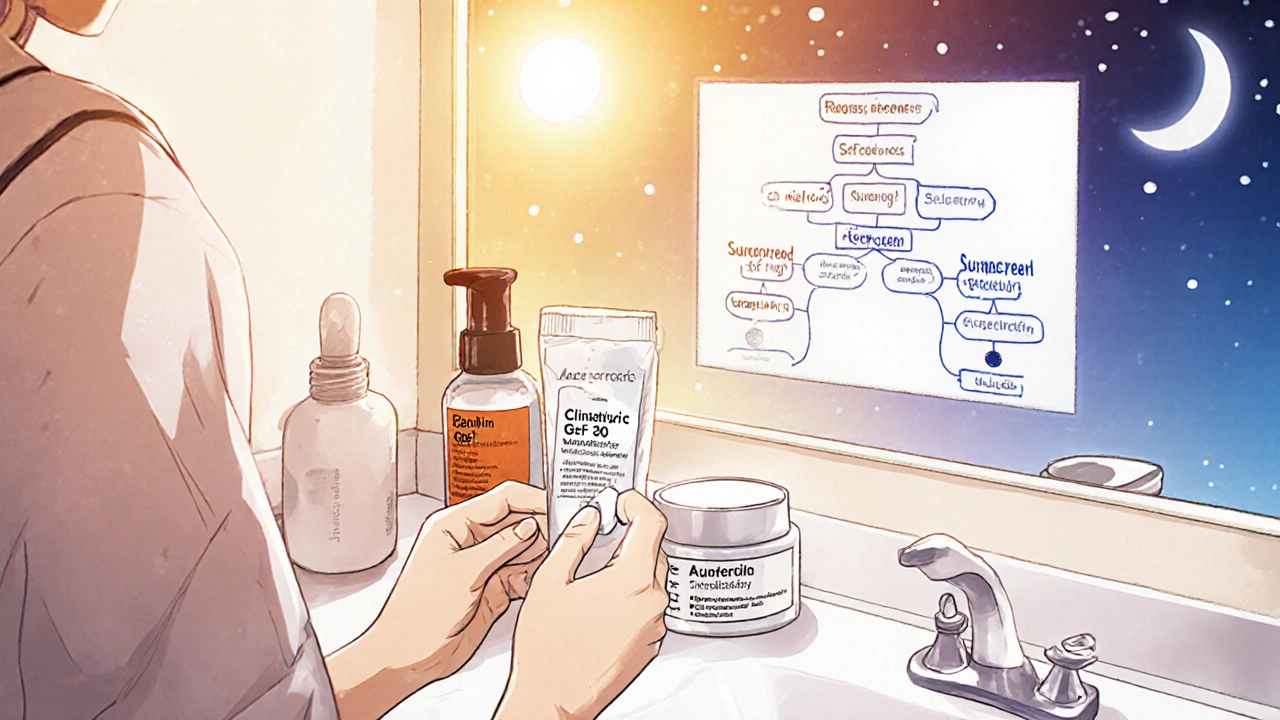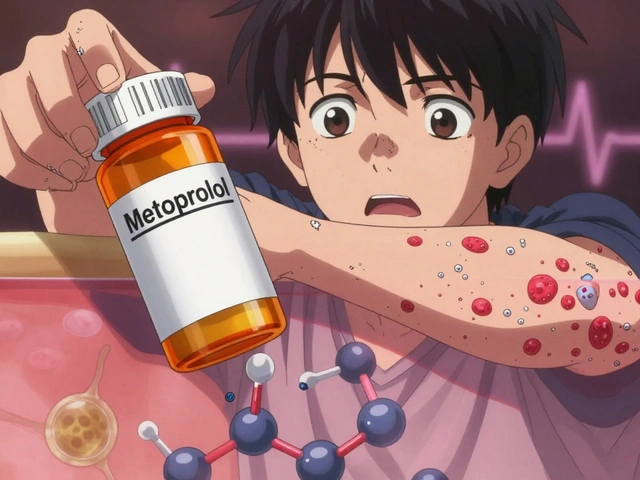Quick takeaways
- Clindamycin gel is a prescription‑only antibiotic that targets acne‑causing bacteria and reduces inflammation.
- When you need fast anti‑inflammatory action, it often beats over‑the‑counter options.
- Common alternatives - benzoyl peroxide, retinoids, azelaic acid, salicylic acid, oral doxycycline, tea tree oil - each have a unique strength and drawback.
- Combination therapy (e.g., clindamycin + benzoyl peroxide) can cut resistance and improve results.
- Pick the treatment that matches your acne type, skin tolerance, and lifestyle.
Ever stared at the acne‑section of the pharmacy aisle and felt overwhelmed? You’re not alone. The market is crowded with gels, creams, pills, and even essential oils, all promising clearer skin. This guide zeroes in on Clindamycin gel - a prescription antibiotic many dermatologists love - and lines it up against the most popular alternatives. By the end you’ll know when clindamycin makes sense, when another option might be smarter, and how to avoid common pitfalls.
What is Clindamycin Gel?
Clindamycin Gel is a topical antibiotic formulated as a clear, water‑based gel, typically at 1% concentration, used to treat inflammatory acne vulgaris. It works by suppressing Propionibacterium acnes (now called Cutibacterium acnes), the bacteria that thrive in clogged pores and trigger redness. Because it’s a prescription, you’ll need a doctor’s go‑ahead, but the medication itself is applied once or twice daily directly to the affected areas.
How does it work?
Clindamycin belongs to the lincosamide class of antibiotics. When you apply the gel, it penetrates the follicle wall and interrupts bacterial protein synthesis. The result? Fewer bacteria, less inflammation, and quicker fading of papules and pustules. Unlike oral antibiotics, the gel targets the skin locally, so systemic side effects are rare.
When should you consider Clindamycin Gel?
If you have moderate to severe inflammatory lesions (red bumps, pus‑filled spots) that haven’t responded to over‑the‑counter (OTC) options, clindamycin is often the next step. It’s especially useful when:
- You need rapid reduction of redness.
- You’re prone to scarring and want to keep inflammation low.
- You’ve tried benzoyl peroxide or retinoids but experienced excessive dryness or irritation.

Popular alternatives at a glance
Below is a quick snapshot of the most common non‑prescription or prescription competitors. Each offers a different primary action - killing bacteria, unclogging pores, or normalising skin turnover.
- Benzoyl Peroxide: a radical‑forming agent that oxidises bacterial membranes and dries out excess oil.
- Retinoids (e.g., adapalene, tretinoin): vitamin A derivatives that speed up cell turnover and prevent clogged pores.
- Azelaic Acid: a dicarboxylic acid that reduces bacteria, inflammation, and hyperpigmentation.
- Salicylic Acid: a beta‑hydroxy acid (BHA) that dissolves the glue holding dead skin cells together.
- Doxycycline: an oral tetracycline antibiotic that works from the inside out, useful for widespread inflammatory acne.
- Tea Tree Oil: a natural essential oil with antimicrobial properties, favored by those who prefer botanical solutions.
Side‑by‑side comparison
| Ingredient | Primary Mechanism | Typical Concentration | Pros | Cons |
|---|---|---|---|---|
| Clindamycin Gel | Inhibits bacterial protein synthesis | 1% | Fast anti‑inflammatory effect; minimal dryness | Potential resistance; prescription only |
| Benzoyl Peroxide | Oxidises bacterial cell walls & reduces oil | 2.5%-10% | Broad‑spectrum antibacterial; reduces resistance when combined | Can cause irritation, bleaching of fabrics |
| Retinoids (Adapalene) | Normalises keratinocyte turnover | 0.1%-0.3% | Prevents comedones; improves texture | Sun sensitivity; initial purge |
| Azelaic Acid | Reduces bacteria & keratinocyte proliferation | 15%-20% | Also fades post‑inflammatory hyperpigmentation | May cause mild tingling; slower results |
| Salicylic Acid | Exfoliates inside the pore | 0.5%-2% | Great for blackheads; non‑prescription | Dryness on oily skin; less effective for deep inflammation |
| Doxycycline (oral) | Systemic antibacterial, anti‑inflammatory | 40 mg‑100 mg daily | Targets widespread lesions; useful for hormonal acne | Photosensitivity, gastrointestinal upset |
| Tea Tree Oil | Essential‑oil antimicrobial | 5%-10% in vehicle | Natural; low cost | Potential allergic reactions; variable potency |
Pros and cons in plain language
Let’s break down the bullet points a bit more. Think of each option as a tool in a toolbox.
- Clindamycin Gel: Great for a quick calm‑down of red bumps. The downside? Bacteria may learn to ignore it if you use it alone for months.
- Benzoyl Peroxide: Works like a bleach for acne bugs, making resistance rare. But it can leave your skin feeling tight and may stain your pillowcases.
- Retinoids: The ultimate preventative - they keep new pimples from forming. The learning curve includes a few weeks of flaking and heightened sun sensitivity.
- Azelaic Acid: A multitasker that also evens out dark spots. It’s slower, so patience is key.
- Salicylic Acid: Perfect for clogged pores and blackheads. Not the best stand‑alone for inflamed, pus‑filled lesions.
- Doxycycline: Handy when acne covers large areas (like the back). Watch out for sunburns and stomach upset.
- Tea Tree Oil: The natural‑lover’s pick. Quality varies, and a little goes a long way to avoid irritation.

How to pick the right option for you
Here’s a quick decision tree you can run through while looking at your skin in the mirror:
- Is the main problem redness and active inflammation? Yes → Consider Clindamycin Gel or oral Doxycycline.
- Do you have a lot of blackheads and oily shine? Yes → Salicylic Acid or Benzoyl Peroxide.
- Are you worried about future breakouts and post‑acne marks? Yes → Retinoids or Azelaic Acid.
- Do you prefer a prescription‑free, natural route? Yes → Tea Tree Oil (use a carrier cream).
Most dermatologists will recommend a combo: clindamycin + benzoyl peroxide in the morning, and a gentle retinoid at night. This covers bacteria, oil, and clogged pores all at once while minimising resistance.
Tips for safe and effective use
- Start slow. Apply a pea‑sized amount once daily for the first week, then increase to twice daily if tolerated.
- Use a fragrance‑free moisturizer to counteract any dryness.
- Never mix clindamycin with other prescription antibiotics unless your doctor says so - duplicate antibiotic pressure can backfire.
- Always wear SPF 30+ during the day, especially if you’re also using retinoids or benzoyl peroxide.
- Store the gel at room temperature and keep the cap tight to maintain potency.
Frequently asked questions
How long does it take to see results with Clindamycin Gel?
Most people notice reduced redness and fewer new pimples within 2-4 weeks, but full clearance can take 8‑12 weeks.
Can I use Clindamycin Gel with Benzoyl Peroxide?
Yes - the combo is actually recommended because peroxide reduces bacterial resistance while clindamycin handles the inflammation.
Is Clindamycin Gel safe during pregnancy?
It’s classified as Category B, meaning animal studies show no risk, but human data are limited. Talk to your OB‑GYN before starting.
What should I do if my skin becomes overly dry?
Cut back to once‑daily application, add a ceramide‑rich moisturizer, and avoid harsh scrubs. If dryness persists, ask your dermatologist about switching to a lower concentration.
Are there any drug interactions with oral antibiotics like Doxycycline?
Doxycycline can bind calcium‑rich foods and antacids, lowering its absorption. Take it with a full glass of water and wait at least two hours before eating dairy.
Bottom line: there’s no one‑size‑fits‑all acne cure, but understanding each ingredient’s role lets you build a regimen that fits your skin’s quirks. Whether you go with clindamycin gel, a peroxide‑based product, or a retinoid, consistency and sun protection are the real game‑changers.






Look, if you’re serious about clearing those stubborn red spots, you need a US‑made prescription that hits the bacteria hard. Clindamycin gel does just that-fast anti‑inflammatory action without the oily mess of some over‑the‑counter stuff. Don’t waste your time with generic “miracle” creams that just dry you out and leave you looking like a desert.